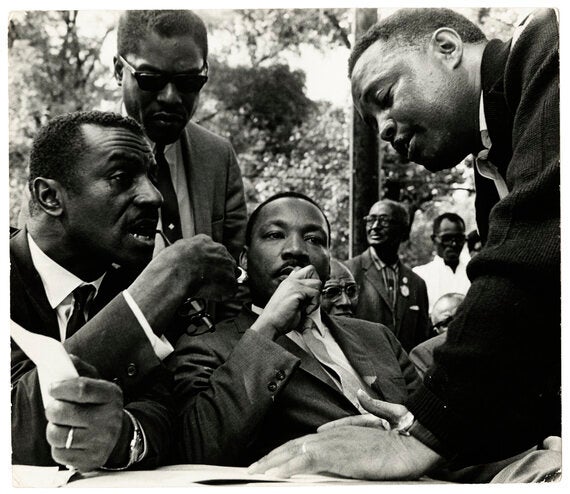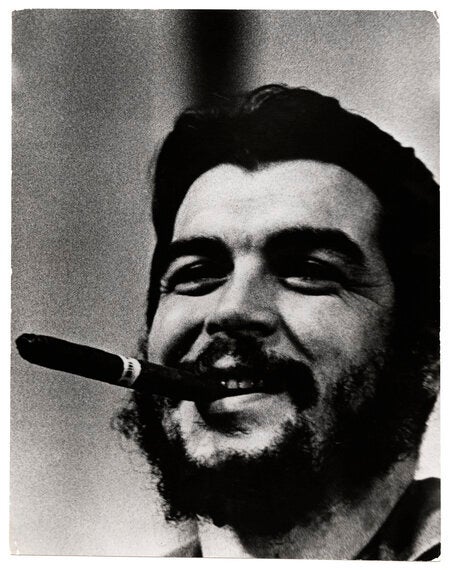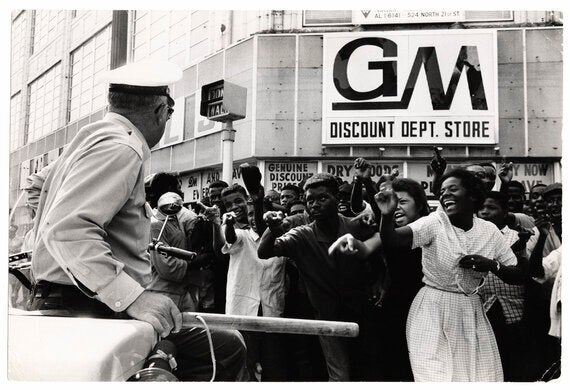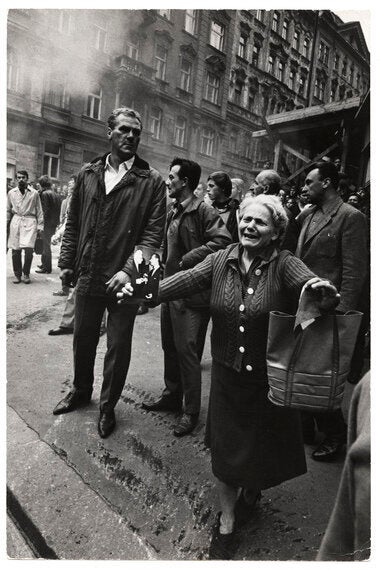
Human Rights, Human Wrongs at The Photographers' Gallery is a thought-provoking photography exhibition that examines the legacy of iconic images. Spanning the years from 1945 to the early 1990s, the exhibition reflects the major political upheavals, conflicts, wars and struggles against racism and colonisation that became particularly urgent after the Second World War.
Powerful images of people, war and societies can tell an important story without any words, but can they fully represent an issue? And what is the long-term impact of these images when they can sear into the human consciousness?
Included in the show are instantly familiar images such as Patty Hearst in her beret and gun, Che Guevara smoking his cigar, a young Muhammad Ali, and Lee Harvey Oswald after his arrest.

As well as these iconic pictures there are also those photographs that have made their way into our cultural history - a South Vietnamese Buddhist monk aflame from self-immolation during the Vietnamese War, a suspected Vietcong member being shot by a South Vietnamese soldier, and photos of protests from across the United States with black protestors being beaten by white men with batons.
The theme of the exhibition is huge, that of the legacy of images, but this is matched with an extraordinary range of photographs. Over 300 black and white original press prints have been drawn from the Black Star Collection at the Ryerson Image Centre and are displayed here across two floors. Yet the hanging of this exhibition is very clever.

Photos of the bloody aftermath of riots in Mozambique in 1983 are shown alongside similar from the riots in Chicago from 1977. You need the captions to remind you which ones are which. We are not so different. And there are some powerful contrasts too.
A portrait of Andreas Baader from 1976 is shown alongside a graphic picture of his death one year later. Similarly a portrait of Nobel Peace Prize winner Lester B Pearson from 1957, the year he won, is shown alongside photos of the debris of Dag Hammarskjold's destroyed aircraft from 1961. He too won the Nobel Peace Prize but his fate was very different and it is widely considered today that the plane was shot down in a deliberate assassination.

And the endeavour to address this question - what is the lasting impact of these images? - is certainly met. I particularly felt this in the photos of droughts and famines from across sub-Saharan Africa.
The tiny, emaciated starving African children, tummies swollen and bloated with flies crawling over their faces. We all know the pictures. At the time they were crucial documentary evidence of the starvation but today, too many still consider Africa to be a place full of starving children and poverty. An entire continent has become incorrectly defined by these images.
And what about the depiction of victims? Photojournalism provided crucial evidence of the violent oppression of the civil rights movement in the Deep South. These photos are a truthful record of the violence. But what is the impact in our culture of a constant stream of photos of black protestors as victims?

And the exhibition also cleverly explores the deliberate manipulation of photography to serve people's own ends. Henry Kissinger is a man many think belongs in jail for war crimes, but in his photo he's shown on the phone in the White House - a statesman.
Similarly Yasser Arafat's portrait has him as a man of the Palestinian people in his ever-familiar black and white scarf, the traditional keffiyeh. But this was a man who had also amassed a secret fortune of $1 billion by the time of his death, even though Palestinians, who he claimed to champion, lived in poverty.
The scale and breadth of the images collated together for this show is impressive. Its challenge to us is an important one and this is an exhibition well worth seeing, even more so considering admission is free.
Admission Free
The Photographers' Gallery, London to April 6, 2015
Image Credits:
1. Bob Fitch, Martin L. King, 1968
2. Osvaldo Salas, Che Guevara, c.1962
3. Charles Moore, Birmingham, 1963
4. Carlo Bavagnoli, Biafra, c.1968
5. Hilmar Pabel, Czechoslovakia Invasion, 1968